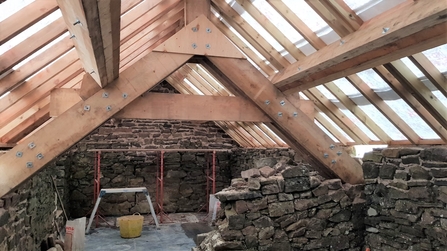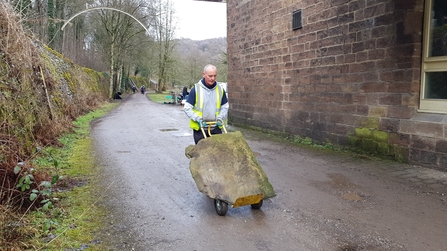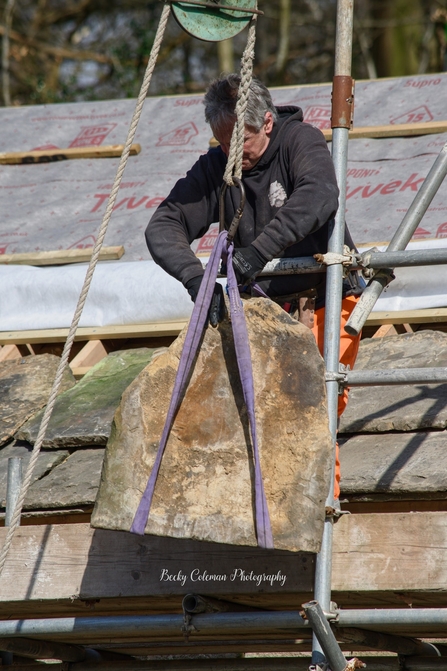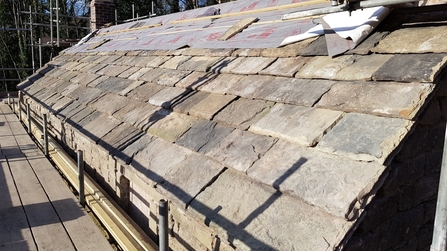Built in 1802, the cottage has withstood two world wars and two pandemics – this month the much-loved cottage moves an important step closer to completion. Despite delays caused by the Covid lockdowns, the restoration team has made good progress and they are optimistic the cottage will be open to the public later this year.
The cottage will be an important gateway to Lea Wood Nature Reserve and the wider Derwent landscape. As well as the restoration work on the cottage, Derbyshire Wildlife Trust together with dedicated volunteers are working on access improvements to the Lea Wood Nature Reserve, immediately behind the cottage.
Rebuilding the cottage roof has proved to be one of the project’s biggest challenges. Due to the remoteness of the location, the large roof timbers had to be transported to the cottage in the same manner as the original timbers over two hundred years, along the canal from Cromford Wharf to Lea Wood Pump House.





